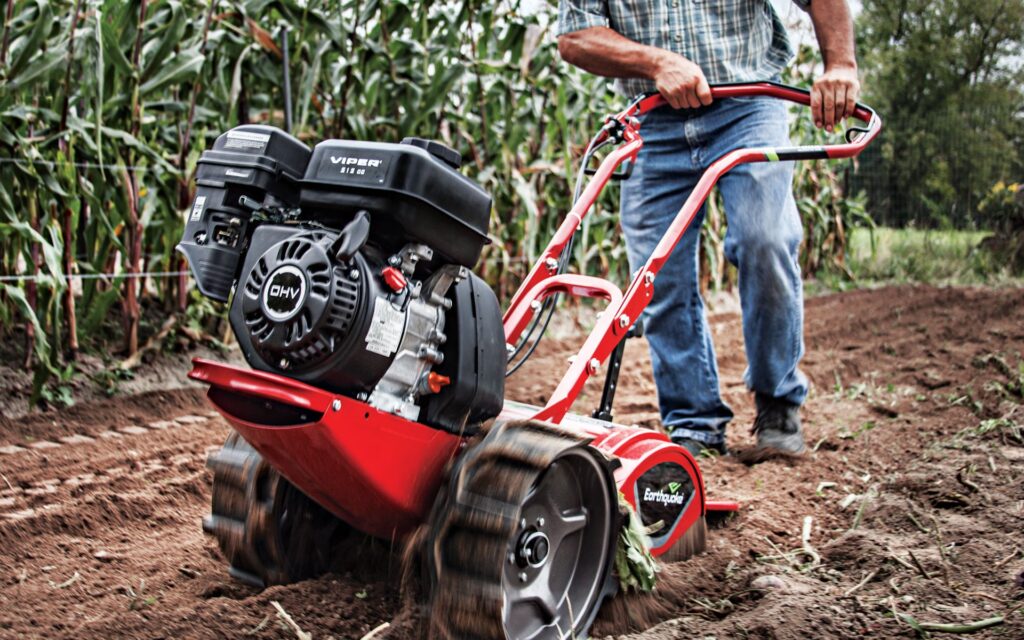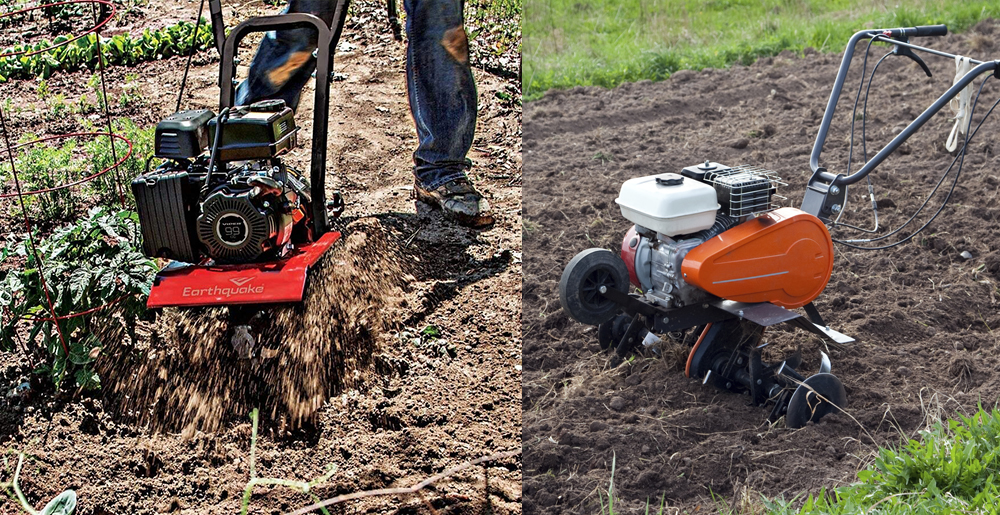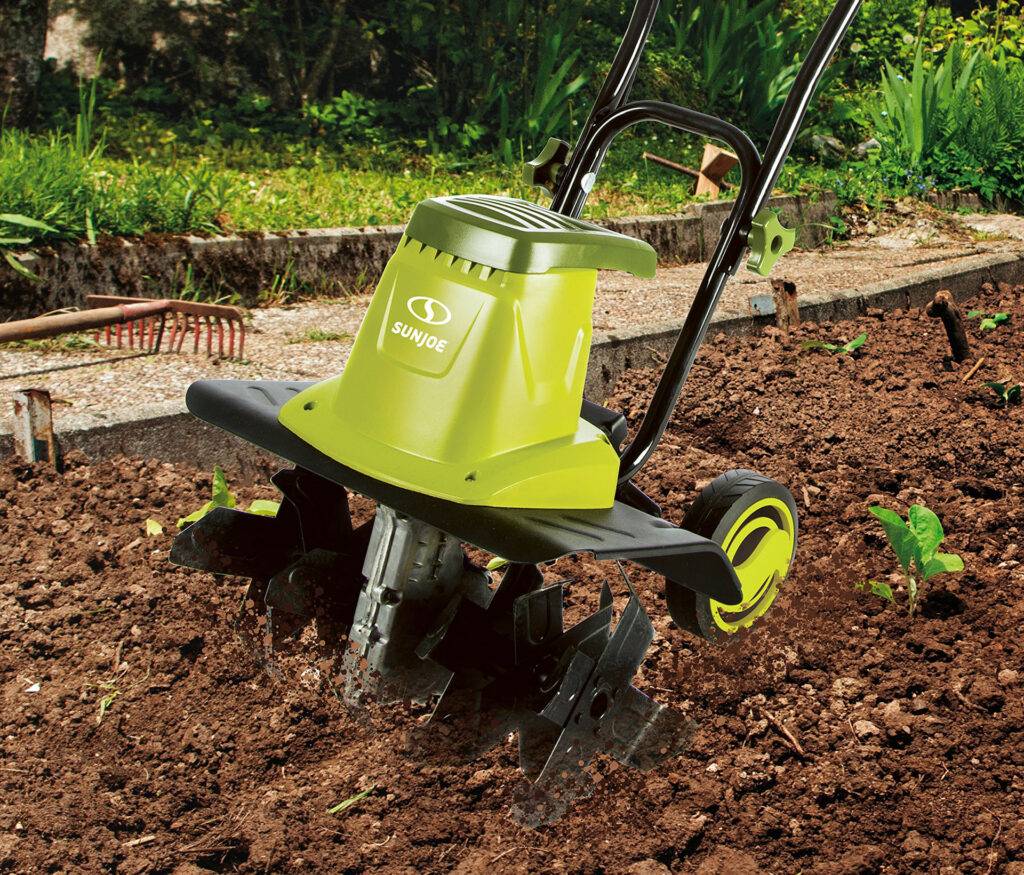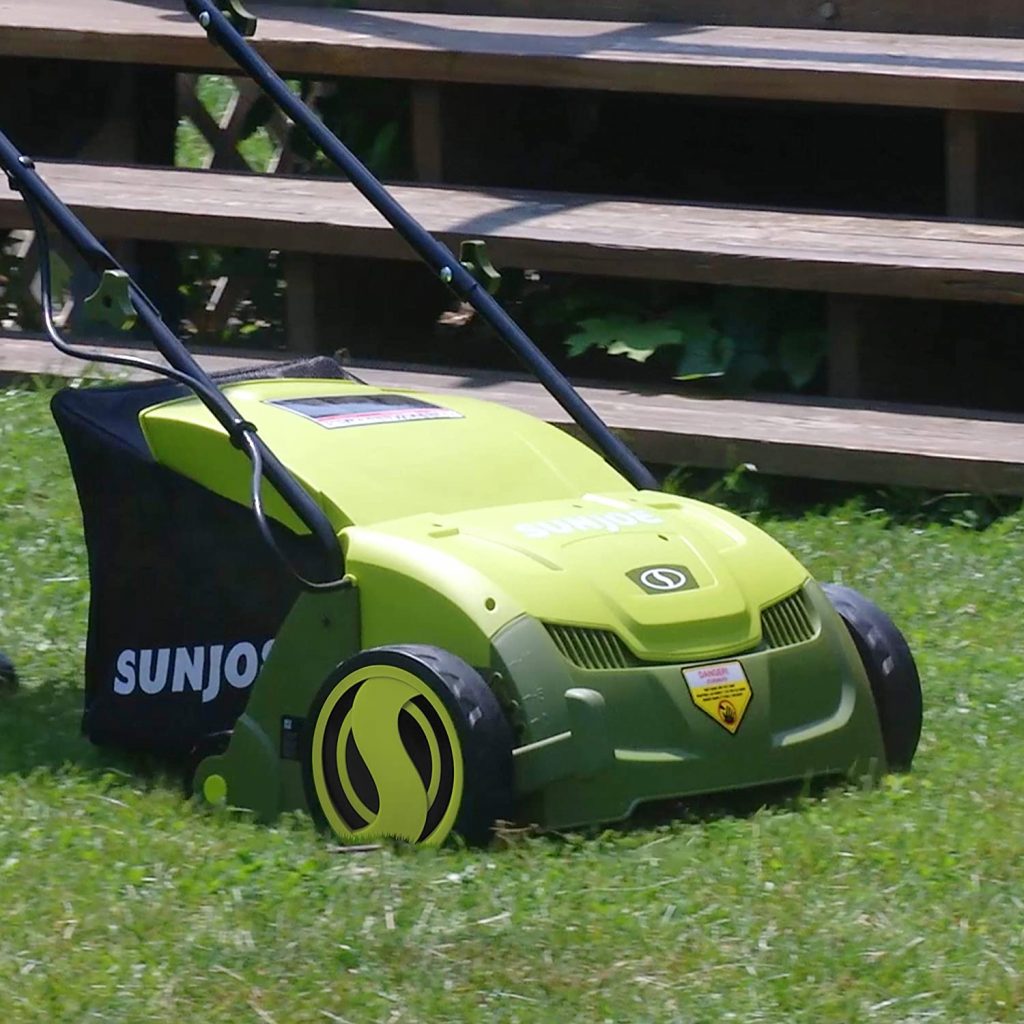
Grass is only fun when it’s growing lush and green on your lawn. When the time comes to remove it and reseed the lawn or make a garden, it turns into an absolute nightmare. However, you don’t need to sweat it if you know how to use a tiller to remove grass.
Removing grass using a tiller is one of the most effective methods of getting the job done. That’s because a tiller gets deep under the soil and pulverizes the soil particles. Your garden gets to retain its organic matter unlike when you cut it off in the form of sod. Also, there is no need for toxic chemicals.
The first requirement of removing grass using a tiller is that you need a solid tiller. Some of the best garden tillers to get rid of grass are rear-tine tillers, for which you can read an in-depth review here.
Once you have your tiller ready, the rest is a matter of rolling up your sleeves, dressing for the part, and getting down to business.
A garden tiller, rototiller, or simply a tiller is a heavy-duty machine used for deep cultivation up to 8”-12” deep. Read our review on the best tiller for breaking new ground! Garden tillers are capable of breaking up hard and compact soil into loose aggregates, which makes it perfect for breaking up grass ready for planting.
Garden tillers are not to be confused with cultivators, their smaller and less powerful cousins. Cultivators are used for tilling only the top few inches of the soil while maintaining the integrity of the layers beneath.
On the other hand, tillers aren’t so subtle. Just like tractor cultivators, they turn up the soil from deep underneath and bury any weeds, grass, mulch, and other plant matter. Done properly, tilling your grass lawn should eliminate the grass and make the lawn ready for planting immediately.
Some tough grasses might try to grow from leftover grass rhizomes, but you can hoe these in a few weeks to get rid of them permanently.
Garden tillers have many things going for them that make them the perfect garden implement to deal with grass. First, you need to understand that tillers are not made equal and that some are more effective than others.
Front-tine tillers have their blades (tines) in front of the machine. These tines typically rotate forwards and help the tiller gain traction while cultivating at the same time. However, these tillers tend to be smaller, less powerful, and thus may not be as suitable for removing grass.
Short grass on a soft lawn can be dealt with using a front-tine tiller. Short grasses tend to have shallow roots so that even an electric tiller and cultivator such as the Sun Joe TJ603E can easily deal with it.
The TJ603E is powered by a 12-Amp motor that allows it to cultivate to a depth of 8” and a width of 16”. It comes with 6 hardened steel tines for durability and strength, which makes it perfect for small lawns.
Rear-tine tillers are the true workhorses in the garden. They have their blades positioned at the rear of the machine, just behind the wheels. This position gives them more “bite” and allows them to dig deeper and more powerfully than front-tine tillers.
Rear-tine tillers tend to be huge, powerful, and some models can even deal with rocky soil. This also means that they need to have larger and thicker tines and bigger wheels.
There are different types of tines and tine rotation that can be fitted onto a tiller.
As you can see, rear-tine tillers are designed to penetrate deep into the ground, which is good because lawn grass can reach a depth of 6” Trusted Source The Cool-Season Turfgrasses: Basic Structures, Growth and Development - PennState Extension This article covers the basic structures of grass plants, how they grow and develop, and how to identify the different species of cool-season turfgrasses. extension.psu.edu beneath the soil surface. Only deep cultivation will help to remove the whole root system and break up compact soil, which literally comes with the turf.
By now, you have the information you need to start removing grass using a tiller. The first step is choosing the right kind of tiller and ensuring that it has the right kind of tines.
The only thing remaining now is to get working. Just remember to gear up with the right safety equipment to protect your eyes, ears, hands, and feet.
The ground needs to be wet before you start working it, but not so wet that it becomes soggy. A few days of rain or watering the lawn before tilling should get it soft enough for the tiller.
You should also remove any rocks from the garden to avoid damaging the equipment. If you have things like sprinkler heads, power lines, hydrants, or plumbing in the ground, make sure that you mark these first with something bright to avoid running into them.
Assuming you’re using one of the best rear-tine tillers, getting started won’t be a problem. It’s a simple process of firing the engine the right way.
Using a rototiller is hard enough, especially if you don’t have the right experience. The following video has excellent tips on how to control and use a tiller, but the key is to guide the machine instead of working too hard to control it
Another important tip is to set the depth adjustment to the medium depth at first and make the first pass. After that, adjust to the deepest setting on your second or third pass, so that you are not trying to do all the work on the first pass.
To make sure that you cover every inch of the lawn, it’s best to adopt a pattern. The easiest one is to start from one side of your garden’s perimeter and work slowly towards the center. If you have a very large garden, you can do it in halves.
One of the big advantages of using a tiller to remove grass is that it allows you to plow the organic matter right back into the soil. However, it’s also a good idea to add a layer of mulch, compost, or organic fertilizer on your last pass and mix it with the soil to ensure that it has enough nutrients for what you’re going to be planting.
You can also use a hand tiller such as the Yard Butler Twist for this last step. The Yard Butler allows you to spread the organic matter into just the top few inches of the soil, making it available for the next round of plants.
This particular model is especially useful because of its sturdy construction, and it has the best value for money – you won’t believe how cheap it is for the amount of work it gets done.
Removing grass for reseeding or preparing a garden can be a pain if you don’t know what to do. The good old manual method involves a lot of sweating, heaving, and probably a few blisters before you can get it all out.
The alternatives aren’t pretty either. You can either spray the grass with chemicals (not good for mother Earth) or smother it to death with a tarpaulin, which can take months. Tilling is the only method that allows you to get your lawn ready for planting immediately.
The only thing you need is to learn how to use a tiller to remove grass. Hopefully, this guide has helped do just that from the first step of choosing the right garden tiller to the last one of leveling out the soil for the seedbed. Happy tilling!





